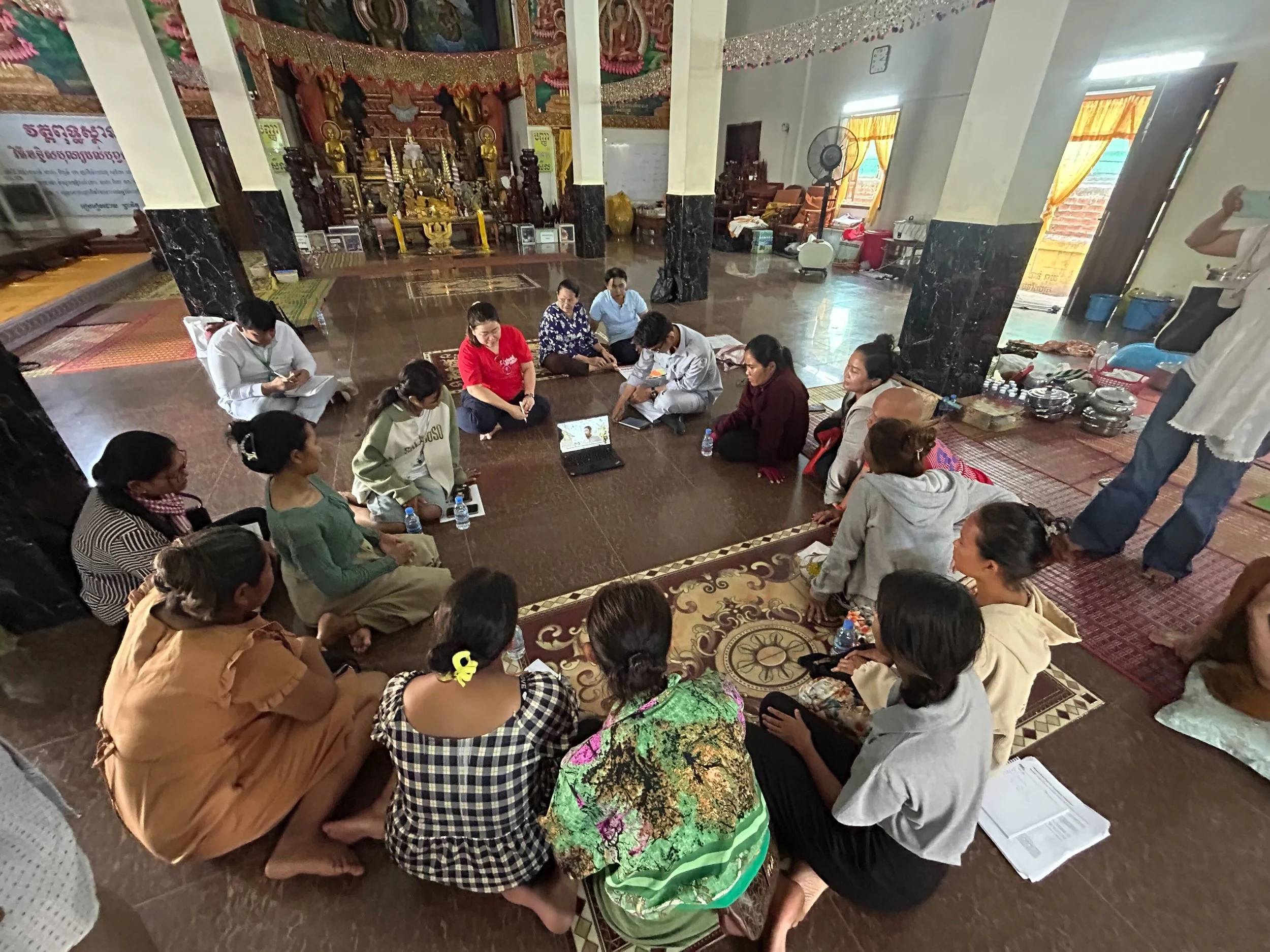From Cash to Clicks: Preparing Cambodia’s ID Poor Households for the Digital Economy
From Cash to Clicks: Preparing Cambodia’s ID Poor Households for the Digital Economy
By Nirri Shah, Program Development and Financial Capability Manager, Good Return
Across the globe, governments are moving from cash to digital distribution of social assistance— transferring money directly into recipients’ mobile banking accounts. Cambodia plans to do the same. For people living in poverty (ID Poor households), this represents a big opportunity: the chance to move from unbanked to banked, and to better participate in the formal digital economy. But without the skills to navigate digital systems, the hope of inclusion can turn into frustration, exclusion, or even greater vulnerability to scams. While more than 80% of Cambodians own smartphones, financial and digital literacy remain the biggest barriers to the adoption and sustained use of digital financial services (DFS).
In Cambodia, strong progress has been made since the launch of the National Financial Inclusion Strategy in 2019. Despite this, 61% of adults remain unbanked*, many of them ID Poor households receiving government cash assistance. These households operate almost entirely in a cash economy. Social assistance payments are also provided in cash, requiring individuals to travel once a month to a financial service provider (FSP) agent to withdraw their benefits - costing time, money, and missed opportunities to save.
Many participants and key stakeholders in our field research shared comments such as:
“I still want to use cash because I’m afraid of making mistakes on the mobile banking apps.” (ID Poor participant).
“Limited access to information and literacy impacts their engagement with financial services” (Commune Chief, Sangkat Sambour district).
A small minority of participants understood the benefits of digital banking:
“Having a bank account app gives me more freedom, time and convenience. I can pay at the market by scanning QR code with my mobile, and I don’t need to carry cash along. Also, I don’t need to pay for fuel to get to the nearest agent for cash withdrawal. ” (ID Poor participant).
To support the transition, the World Bank partnered with Good Return to design solutions that prepare ID Poor households for a digital future. Our role was to:
Develop a Digital Financial education payments training module for ID Poor households
Design a locally-led delivery model, with trusted and respected community leaders, who are upskilled to become trainers
Develop a full-scale national rollout approach for implementation
At Good Return, we know the one-size-fits-all model doesn’t work. For this project, we began by listening first - combining desk research, interviews with 20 key stakeholders, including national and local government representatives, regulators, and financial service providers.
There were also focus group discussions with over 70 ID Poor households in provinces with the highest poverty rates.
We found that while 89% of participants owned smartphones, only 17% had a digital bank or mobile accounts. Households trusted agents but distrusted apps and formal financial institutions. They preferred cash because of familiarity, while fears of scams and lack of knowledge kept them away from mobile banking. Benefits were typically spent the same day they were received, and savings were nonexistent. Village Chiefs remained the main, and often only, channel for news, information, or complaints. And while many could identify scams, cyber safety gaps left them vulnerable, with PINs and personal details often shared among families and friends.
Participants’ voices brought these realities to life:
“I don’t know where to complain if my money goes missing on the phone.”
“I trust the agent because I can see them count the cash in front of me.”
“When the money comes, we spend it straight away. We cannot keep it.”
The National Bank of Cambodia plans to roll out General Purpose Accounts, which have the potential to enable ID Poor households to receive their assistance payments cashless, directly on their phones. It will also enable access to basic mobile banking features such as savings, payments, and money transfers (currently not available). This could transform financial inclusion—but only if people have the skills and confidence to use these tools.
To address this, Good Return designed an innovative education module tailored to deal with the realities of ID Poor households. The training blended interactive group exercises, facilitated discussions, drama-based videos, and visual aids designed for low-literacy participants. Good Return also built the capacity of local trainers — including Village Chiefs, Commune Women’s Council members, and National Social Assistance Fund (NSAF) branch officers — through Training of Trainers (ToT) sessions. This approach ensured sustainability by embedding the skills and capacity where they matter most: within the communities themselves.
The shift from cash to digital is more than a change in how people receive and use money. With the right preparation, it can be a pathway to greater financial inclusion, resilience, and security for Cambodia’s most vulnerable households. Using Good Return’s recommendations, NSAF is exploring national rollout opportunities. This initiative is just one part of our broader commitment to financial empowerment, digital inclusion, and poverty alleviation across the Asia-Pacific.
Good Return is proud to be part of the World Bank’s workplace giving program. To give to Good Return, find us on your workplace giving platform.
* 2025 The Global Findex 2025 (https://www.worldbank.org/en/publication/globalfindex)


